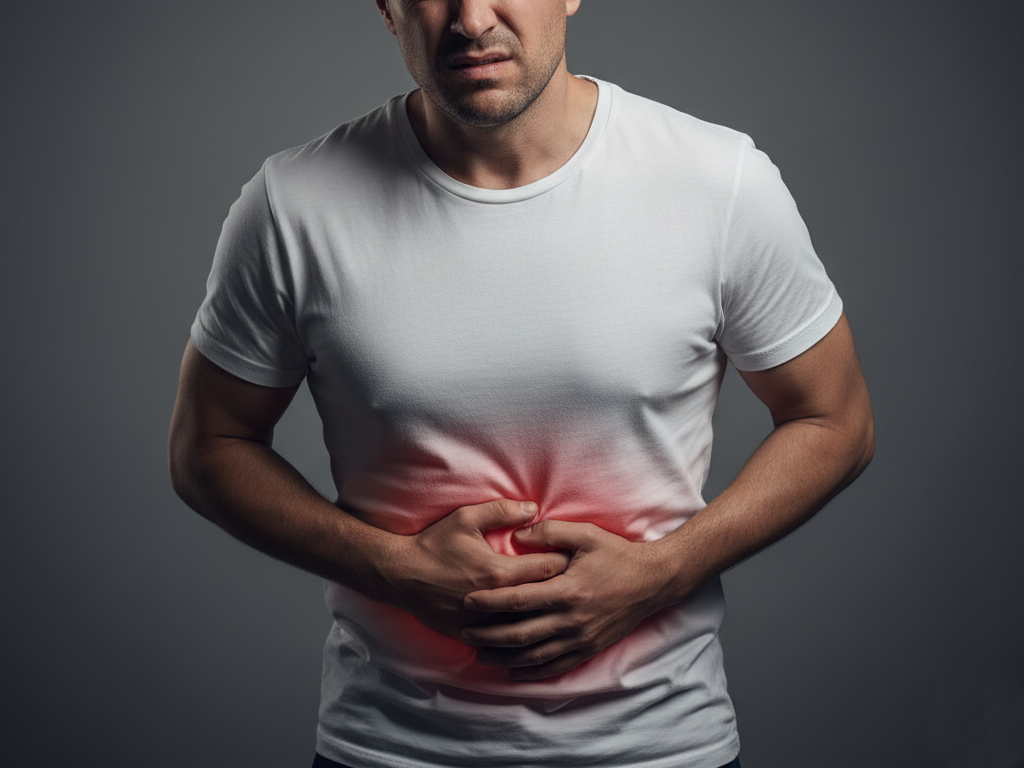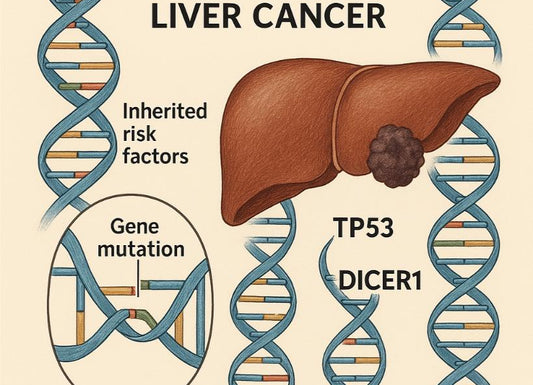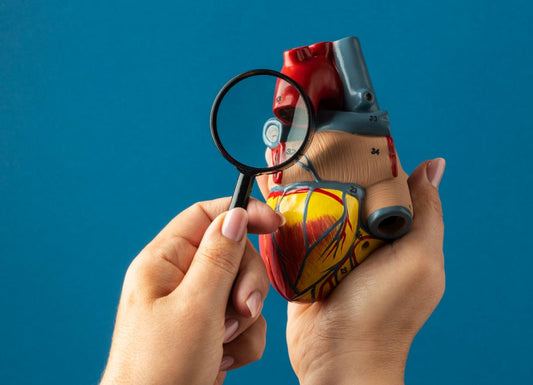Where is liver pain felt?
 Written By
Abel Tamirat, MD
Written By
Abel Tamirat, MD

If you’ve been experiencing discomfort in your abdomen and wondering, “Where is liver pain felt?”, you’re not alone. Because the liver is such a vital organ, understanding how and where pain might show up can help you take action sooner.
In this in-depth guide, we’ll explain where liver pain is typically felt, what it can mean, how it differs from other types of abdominal pain, and when you should see a doctor. We’ll also cover prevention tips, treatment options, and lifestyle changes to support your liver health. By the end, you’ll have a clear understanding of what liver pain feels like, how to recognize warning signs, and what next steps to take.
Where is the liver located?
Your liver is located in the upper right side of your abdomen, tucked under your rib cage. It sits just below your diaphragm (the muscle that helps you breathe) and above your stomach. The liver weighs about three pounds in adults and performs over 500 functions in the body — from filtering toxins to producing bile that helps digest fats.
Because of its location, the liver doesn’t always cause pain directly. Instead, pain can radiate or feel like pressure, and other nearby organs can sometimes cause similar sensations. This makes it important to pay attention not only to the location of the discomfort but also to other symptoms happening at the same time.
Where is liver pain usually felt?

Most people feel liver pain in the upper right abdomen, just under the rib cage. It can also:
-
Radiate to the back
-
Move upward into the right shoulder
-
Spread across the center of the abdomen
The pain may come and go, or it may be constant. Some describe it as a dull ache, while others feel sharp, stabbing sensations — especially if inflammation or gallstones are involved. The intensity and nature of the pain depend on the underlying condition.
What does liver pain feel like?
The feeling of liver pain can vary widely. Some people describe it as:
-
A dull, persistent ache: Often felt with fatty liver disease or cirrhosis.
-
Sharp or stabbing pain: More common with gallstones, liver abscess, or inflammation.
-
Fullness or pressure: A sensation that the abdomen is bloated or tight.
-
Tenderness to touch: The area under the right ribs may feel sore when pressed.
In addition to the pain itself, you may also notice:
-
Loss of appetite
-
General fatigue
-
Swelling in the abdomen
What causes liver pain?
Liver pain can be triggered by many different conditions. Some of the most common include:
Fatty liver disease
This occurs when fat builds up in the liver cells. There are two main types:
-
Nonalcoholic fatty liver disease (NAFLD): Linked to obesity, insulin resistance, and metabolic syndrome.
-
Alcohol-related liver disease (ALD): Caused by long-term heavy drinking.
Fatty liver disease may not cause pain in its early stages but can lead to discomfort and inflammation over time.
Hepatitis
Hepatitis is inflammation of the liver, often caused by viral infections (A, B, or C), autoimmune disease, or toxins. Hepatitis can cause aching in the upper right abdomen along with symptoms like jaundice, fatigue, and nausea.
Cirrhosis
Cirrhosis develops when healthy liver tissue is replaced by scar tissue after long-term damage. Pain from cirrhosis may be accompanied by swelling, easy bruising, and confusion from toxin buildup.
Gallstones and bile duct blockage
Sometimes what feels like liver pain is actually gallbladder pain. Gallstones can block bile flow, causing sharp, severe pain under the right ribs.
Liver cancer
Liver tumors may not cause pain until they grow large, at which point pain may spread to the back or shoulder.
Liver abscess
A pocket of infection in the liver can cause sharp pain, fever, chills, and sweating.
Other causes
-
Blood clots in liver vessels
-
Genetic conditions like hemochromatosis or Wilson’s disease
-
Medication or toxin-related damage
How do I know if my pain is liver-related?
It’s not always easy to tell whether pain in your abdomen is coming from your liver. Some clues that point to a liver issue include:
-
Pain located under the right rib cage
-
Accompanying jaundice (yellowing of eyes or skin)
-
Pale or clay-colored stools
-
Swelling in your abdomen or ankles
-
Chronic fatigue or nausea
Since many abdominal organs sit close together, pain in this area could also be caused by stomach ulcers, kidney issues, or gallbladder disease. That’s why it’s essential to get a proper evaluation.
When should you see a doctor?

Seek medical attention if you experience:
-
Persistent or worsening pain in the upper right abdomen
-
Yellowing of the skin or eyes
-
Severe swelling in your belly
-
Vomiting blood or passing black stools
-
Sudden, severe pain after an injury or accident
These may be signs of advanced liver disease or complications that require urgent care.
How is liver pain diagnosed?
Doctors use several methods to determine whether your pain is liver-related:
-
Blood tests: To check liver enzymes, bilirubin, and other markers of liver function.
-
Imaging scans: Ultrasound, CT, or MRI can show changes in liver size, fat content, or growths.
-
FibroScan®: Measures liver stiffness to assess fibrosis or scarring.
-
Biopsy: In some cases, a small piece of liver tissue may be examined for a definitive diagnosis.
Your provider will also ask about lifestyle factors, alcohol use, medications, and family history to get a clearer picture.
How is liver pain treated?
The treatment depends on the cause:
-
Lifestyle changes: Reducing alcohol intake, eating a balanced diet, losing weight if needed, and exercising regularly.
-
Medications: Antivirals for hepatitis, steroids for autoimmune hepatitis, or medications to manage bile duct problems.
-
Procedures: Gallstone removal, fluid drainage, or surgery for tumors.
-
Monitoring: For conditions like fatty liver, regular checkups may be recommended.
In severe cases, such as liver failure, a transplant may be the only option.
How can you prevent liver pain?

While not all liver conditions are preventable, there are steps you can take to protect your liver health:
-
Limit alcohol consumption: Excessive drinking is a major cause of liver disease.
-
Maintain a healthy weight: Obesity increases the risk of fatty liver disease.
-
Get vaccinated: Vaccines are available for hepatitis A and B.
-
Avoid risky behaviors: Sharing needles or unsafe sexual practices can spread hepatitis.
-
Be cautious with medications: Some over-the-counter and herbal supplements can harm the liver in high doses.
-
Eat a balanced diet: Focus on whole foods, fruits, vegetables, and lean proteins.
How is liver pain different from gallbladder or kidney pain?
Because of their proximity, pain in the upper abdomen can be confusing. Here’s a quick guide:
-
Liver pain: Dull or sharp ache under right ribs, sometimes radiates to back/shoulder.
Gallbladder pain: Often sharp and intense, triggered by fatty meals, may cause nausea. -
Kidney pain: Felt more in the back or sides (flank area), may radiate to groin.
If you’re unsure, your doctor can order imaging tests to clarify the source.
Takeaway
Liver pain is most often felt in the upper right abdomen, just under the ribs, and may radiate to the back or right shoulder. It can feel like a dull ache, sharp pain, or tenderness depending on the cause. Because many liver conditions don’t show symptoms until they are advanced, abdominal discomfort should not be ignored. If you notice pain in this area along with signs like jaundice, fatigue, or swelling, see a healthcare provider promptly. Early diagnosis offers more treatment options and better outcomes. By knowing where liver pain is felt and what it might mean, you can take the first steps to protect your liver health and overall wellbeing.
Take the next step
Worried your pain could be liver-related? Our at-home liver health test can help you understand what’s happening and guide your next conversation with your doctor.
Related Resources
-
Liver Pain Location: Understanding Its Causes and Symptoms – Spot the main causes and symptoms.
-
What Can Be Mistaken for Liver Pain? – Conditions that mimic liver discomfort.
-
Gallbladder Pain vs. Liver Pain – How to tell them apart.
References
Ellis, R. R. (2018, September 4). Liver Pain: Symptoms, Causes, and Location. Retrieved September 17, 2025, from WebMD website: https://www.webmd.com/fatty-liver-disease/digest-liver-pain-causes
Liver problems - Symptoms and causes. (2025). Retrieved September 17, 2025, from Mayo Clinic website: https://www.mayoclinic.org/diseases-conditions/liver-problems/symptoms-causes/syc-20374502
NHS website. (2023, July). Symptoms of liver cancer. Retrieved September 17, 2025, from nhs.uk website: https://www.nhs.uk/conditions/liver-cancer/symptoms/
Symptoms of liver disease. (2025, May 30). Retrieved September 17, 2025, from British Liver Trust website: https://britishlivertrust.org.uk/information-and-support/liver-health-2/symptoms-of-liver-disease/
Watson, K. (2017, April 13). Liver Pain. Retrieved September 17, 2025, from Healthline website: https://www.healthline.com/health/liver-pain

Dr. Abel Tamirat is a licensed General Practitioner and ECFMG-certified international medical graduate with over three years of experience supporting U.S.-based telehealth and primary care practices. As a freelance medical writer and Virtual Clinical Support Specialist, he blends frontline clinical expertise with a passion for health technology and evidence-based content. He is also a contributor to Continuing Medical Education (CME) programs.



